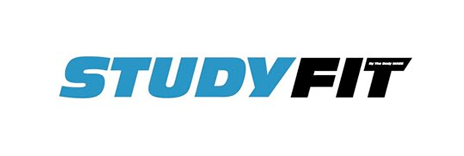Strength training for FAT LOSS : 180 Degrees ask what is best?
There is a lot of debate in the fitness world over what type of exercise is best for fat loss. But my question is: why do we have to choose just one?
Can’t we simply program an intelligent combination of modalities like high intensity cardio, moderate intensity cardio, and strength training for optimal results?
Wait a second. Did you say strength training for fat loss?
Yes, it’s true. Strength training is one of the absolute best ways to promote body fat loss when programmed correctly and coupled with an intelligent nutrition program.
So what does that program look like? There are three main components:
1. Pure Strength Training (3 days/week)
This part of the program is designed specifically to gain strength and to slightly gain, or at the very minimum maintain, muscle mass. This is critical because if you lose too much muscle mass in the quest to lose body fat, you’ll slow your metabolism and often end up a smaller and softer version of yourself, instead leaner and more firm.
 What this set/rep scheme looks like will depend on your training age and ability level, but in general, more advanced trainees can get away with doing much heavier, lower-rep work, while intermediate trainees should stick to moderately heavy loads, and beginners needs to master movements first and foremost, and then they can begin adding weight.
What this set/rep scheme looks like will depend on your training age and ability level, but in general, more advanced trainees can get away with doing much heavier, lower-rep work, while intermediate trainees should stick to moderately heavy loads, and beginners needs to master movements first and foremost, and then they can begin adding weight.
2. Metabolic Resistance Training/Interval Training (2 days/week)
The different types of MRT training or interval training (often called HIIT) can get very confusing, but just know this: they include periods of intense work, followed by periods of rest, and are performed for a relatively short period of time (generally 4-20 minutes). These can be absolute game-changers when it comes to fat loss, if programmed and performed correctly.
 However, you do need to be careful when performing these workouts, so make sure you follow these smart tips:
However, you do need to be careful when performing these workouts, so make sure you follow these smart tips:
- Use smart exercise selection. An example of not smart exercise selection would be doing overhead squats after you’ve done handstand push-ups to failure. Your shoulders are completely exhausted and then you want hold weight over your head and squat? I don’t think so!
- Respect your ability level. If you’re brand new to learning barbell snatches, do you think it’s a good idea to choose a workout that calls for doing several sets of them while under fatigue? If you answered no, you are correct.
- Choose the right tool for the job. There are a number of ways to perform MRT/interval training. You can use bodyweight, kettlebells, barbells, dumbbells and more. There might be times when you’re traveling and all you have access to is your bodyweight, so it’s your best bet to use that. If you have access to a full gym, choose a workout that takes full advantage of what the gym has to offer.
3. Moderate Intensity Cardio (2 days/week)
Although traditional, moderate-intensity, “aerobic” cardio (heart rate in the 120-140 bpm range) has been demonized a lot in the fitness industry in the last 10 years, its still very valuable and has its place.
It’s fantastic for improving your aerobic base, which allows you to recover more quickly in between exercises during strength training or high intensity interval training, so you can use more weight or shorter rest periods. It’s also great for improving your overall recovery throughout the week so you can feel more fresh and rested for every workout.
Finally, it can help decrease stress and anxiety. Many of us walk around in a very sympathetic nervous system dominant state where we constantly feel stressed out, anxious, or hyped up. This moderate intensity cardio can help us switch over to a more parasympathetic nervous system dominant state, allowing us to relax more, feel less anxious, and even sleep better.
Here’s the catch: when most of us think of this traditional cardio, we think of slogging away on a treadmill or elliptical for 30 minutes, but that doesn’t have to be the case. In this instance, the heart is kind of a “dumb muscle” and as long as your heart rate is in the 120-140 bpm range, you’ll be reaping the benefits.
So what would this program look like?
(This is written for an intermediate lifter, adjust as necessary for your ability level)
Monday – Upper Body + MRT/HIIT
Tuesday – Moderate Intensity Cardio
Wednesday – Lower Body + MRT/HIIT
Thursday – OFF
Friday – Full Body
Saturday – Moderate Intensity Cardio
Sunday – OFF
Oh, and pssst… Make sure you include a dynamic warm-up before every workout.
Why not book in for a consultation..fill in the form below to request a session.







